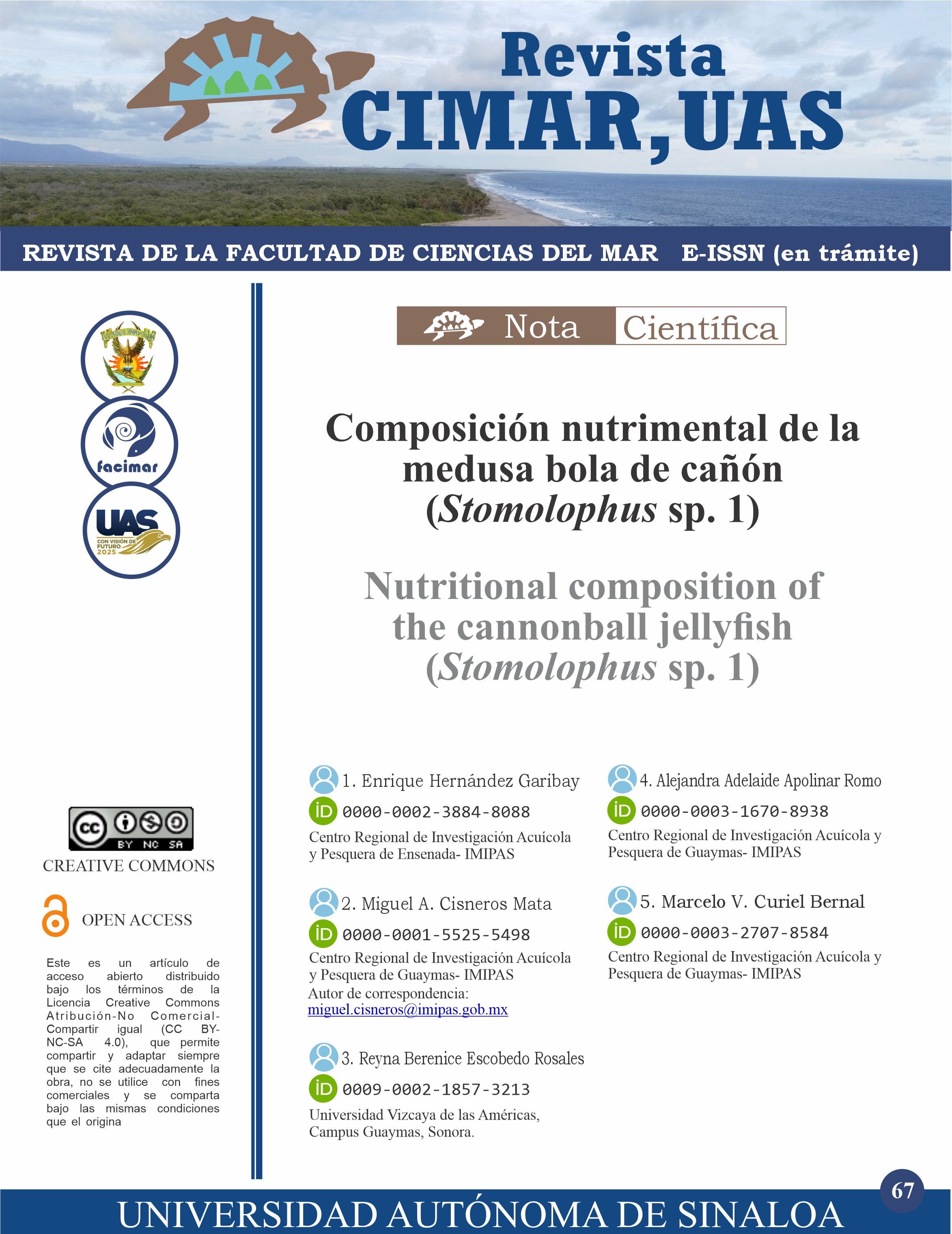Nutritional composition of the cannonball jellyfish (Stomolophus sp. 1).
Keywords:
Asia and Mexico, fishing and consumption of medusae, proximal analysisAbstract
The cannonball jellyfish (Stomolophus spp.) is an abundant fishing resource in Mexico, mainly in the state of Sonora, where commercial catches have exceeding 80,000 metric tons. Prior to shipment to Asia, the fresh product is processed with salts, which changes its consistency from gelatinous to crispy. In Mexico, the jellyfish has so far not been used as food, possibly because it has not found a presentation that is attractive. In this work, the nutritional composition of the cannonball jellyfish (Stomolophus sp.) in five presentations is analyzed: fresh, flour, salted, dehydrated and dehydrated-pickled. Results show that the jellyfish has a moisture content close to 95% and dehydration reduces it up to 68%. Proteins range from 1.3 to 1.7% and rises to 4.1% when brined, and up to 58% as flour. The pickled product, tanned in vinegar, has a higher protein value (4.8%). We conclude that jellyfish is a viable alternative for human consumption in Mexico, depending on its preparation.
Downloads


 Cada manuscrito está bajo la licencia Atribución-NoComercial-SinDerivadas 4.0 Internacional (CC BY-NC-ND 4.0). Puedes consultar los términos de la licencia en el siguiente enlace:
Cada manuscrito está bajo la licencia Atribución-NoComercial-SinDerivadas 4.0 Internacional (CC BY-NC-ND 4.0). Puedes consultar los términos de la licencia en el siguiente enlace: 